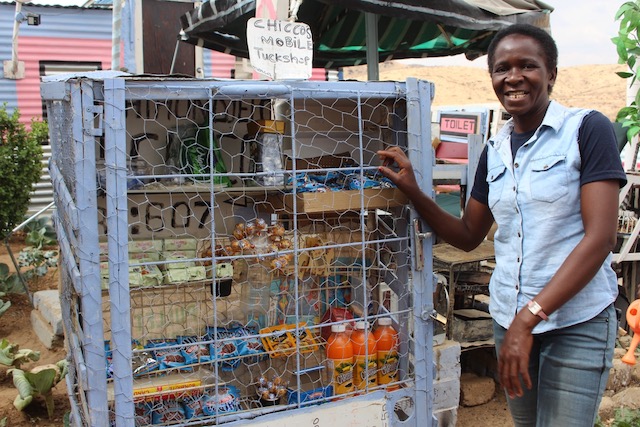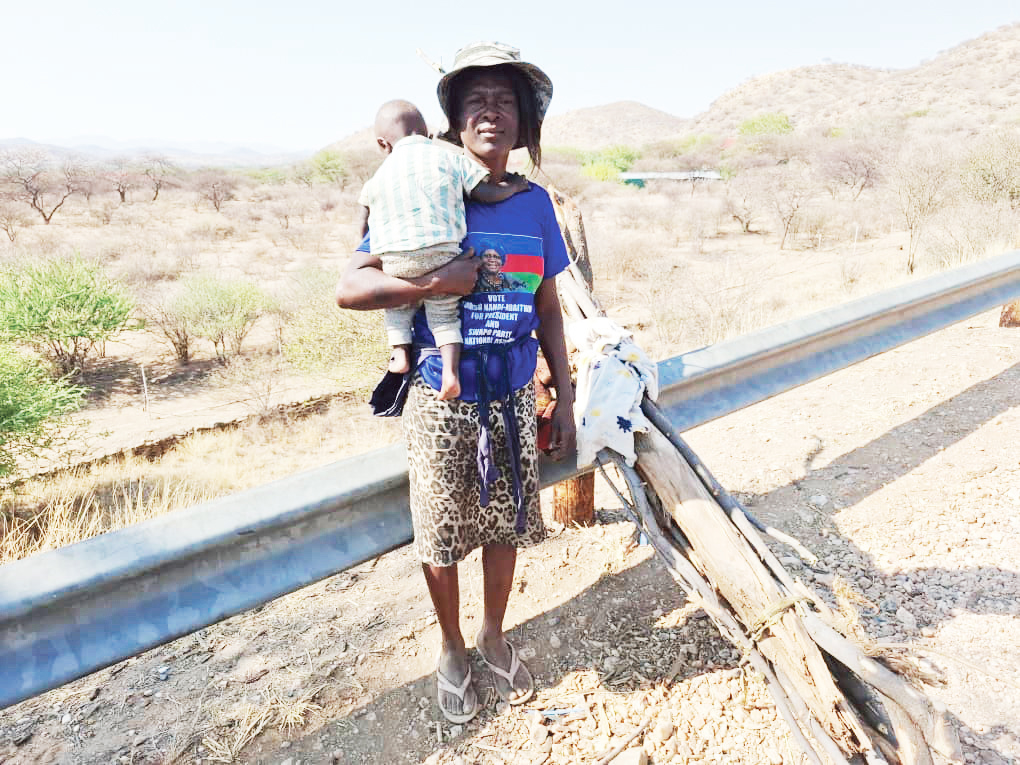ON the fringes of Windhoek, along Havana’s Max Mutongolume street, is an impressive two-colour zinc house that stands out from the common plain silver structures which have sprouted across the township.
Unique features are striking about the modest home which has been in- geniously put together by an engineering aspirant, Fillipus Shambwangala (38), who migrated to Windhoek a few years ago in search of greener pastures.
Two flags hoisted inside the yard are carried in the direction the wind blows. A tall black light that almost resembles the street lights dotted along the Independence Avenue stretch, also protrudes from the yard. Large and healthy-looking green potted plants beautify the exterior of the family dwelling.
This decoration is akin to the lush greenery visible around Windhoek’s affluent suburbs.
A fit man, who carries a large empty water container and looks to be in a rush, emerges from the yard. He stops briefly to tell us that he will be back soon, then vanishes around a corner where a sign boldly labelled ‘CHICCO’S MINI SHOP & SHIWA-TAILOR’ has been put up.
A woman, who is coolly dressed and spots a neatly combed short haircut, also appears soon after and pauses for a while, at the entrance into the home’s yard while possibly trying to make out who we are.
Her face lightens when she notices a face familiar to her.
The person is Secilia Kiptoo, a fourth-year social work student at the University of Namibia.
After a brief exchange of greetings, Kiptoo introduces the woman as Fillipus partner. She met the two through an internship she is doing with Project Hope Namibia which involves partaking in community-based social work.
The yard is spectacular. A hand-made sliding door/gate marked with arrows which in- dicate left to open and right to close leads into the mostly green garden space.
Inside the yard, a young boy of school-going age, still in his grey school trousers and a red casual T-shirt crouches, seemingly unmindful of his surroundings. The child’s attention is fixated on two wire toys he is playing with. Three heads of cabbage grow underneath a place where there is a sink which guests can use to wash their hands upon visiting. Two round containers with taps (one transparent, the other stainless steel) sit on a wall ledge above the sink which has broken taps. The larger stainless steel container is labelled “omeya gofewa” which translates to “soap water”, while the smaller transparent one is labelled “simuia omake goye” which translates to “rinse your hands”.
A poster illustrating the importance of handwashing is pasted above the sink, while a pack of serviettes is placed close to the sink.
The water, Kiptoo explains, does not go waste as it is used to water the several plants which either grow directly from the ground or unused buckets and or tyres placed around the garden.
The array of plants includes red spinach, kale (dated 23-08-2019), garlic (dated 25 July though the year is unclear), cabbage (precisely labelled “Indian type”), onion, maize, moringa, and more garlic.
“Ah! I’m seeing something new!” Kiptoo gasps, upon seeing a pale blue coloured four-wheeled mobile tuckshop. It is laden with mostly sweets, biscuits, cooking spices, and some containers of juice.
A price catalogue of the items attached at the bottom of the mobile tuckshop indicates that bread, matches, and candles are also available for purchase.
The prices range from as little as N$0.50 to N$12.
There are more interesting features in the yard. The most eye-catching is a structure Kiptoo likens to the Swakopmund jetty. Three blue-painted stone slab steps lead up to “Swakopmund” as Kiptoo describes it.
A very green plant labelled “big leaf Indian spinach” grows from a large blue-painted metal bucket which is mounted on six blue-painted bricks piled on top of each other, at the entrance into the “Swakopmund” structure.
The floor is made from an assortment of wooden planks and there are two medium-sized outdoor wooden benches. One is painted blue and white. The second, pink and white. A small potted plant rests on the edge of the first bench. Additional furniture includes a large sun lounger, a yellow and blue striped folding chair, and a large round white cross-leg table.
At the centre of the structure is a stand which supports a large hand-made patio umbrella whose purpose is to shield the structure’s occupants from the unpredictable and sometimes harsh weather conditions.
More of the yard’s features include a cushioned swing chair and miniature seat both crafted from scratch by Fillipus.
After my colleague is satisfied with capturing several photographs of the family and their astonishing garden, we finally make our way into the house.
But before we do, two inventive aspects of the house grab my attention. The first is a circular shaped feature that is mounted on the right-side edge of the Shambwangala abode. It simply reads “DSTV” in bold capital letters and below that “so much more”, in
lower case font.
The second is a doorbell that rings before one can gain access into the house. At this point, my awestruck colleague exclaims “aweh!” and “press, press tate, press!”
The first of Fillipus’ great inventions which greets us on entry into the home, is a small refrigerator, which an excited Kiptoo explains was made from discarded material Fillipus collected from riverbeds.
A minuscule sticker on the front side of the fridge describes it as of 13,3-litre capacity. Fillipus’ partner, Hilde Kadhila, removes a couple of chilled beverages from the fridge to show that it certainly works.
We are filled with awe and admiration.
Stay informed with The Namibian – your source for credible journalism. Get in-depth reporting and opinions for
only N$85 a month. Invest in journalism, invest in democracy –
Subscribe Now!






